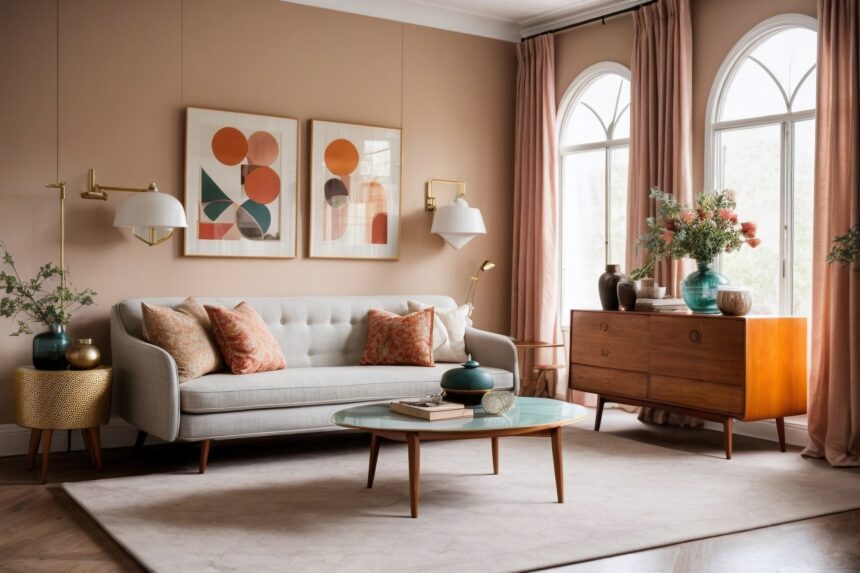In the realm of interior design, a harmonious blend of old and new has emerged as a captivating trend, captivating the hearts of homeowners and design enthusiasts alike. Vintage and repurposed furniture, imbued with rich history and timeless elegance, seamlessly integrates into modern interiors, infusing spaces with a sense of character and individuality. The allure of these pieces lies in their ability to transcend the boundaries of time, bridging the gap between the past and present, and breathing new life into spaces.
1: The Allure of Vintage Furnishings
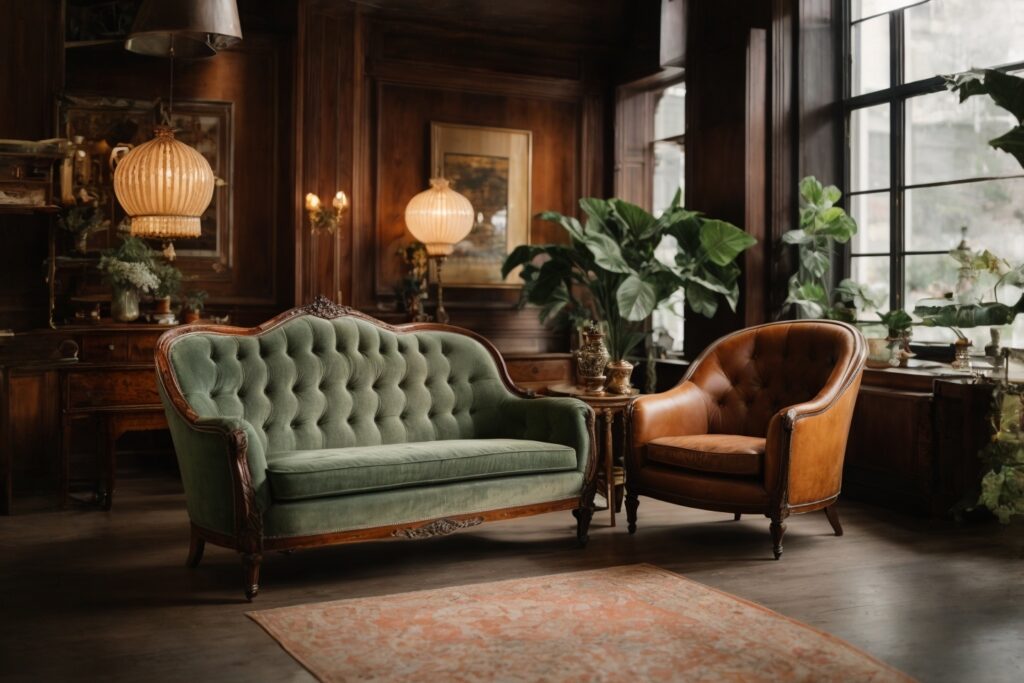
Vintage furniture possesses an undeniable charm that resonates deeply with those seeking to create a home that exudes warmth, nostalgia, and authenticity. Each piece carries a unique story, a testament to the craftsmanship and artistry of bygone eras. The imperfections and patina that grace these treasures, far from being flaws, serve as reminders of their enduring legacy, adding depth and character to any room.
The durability of vintage furniture is a testament to the quality materials and construction techniques employed in its creation. Unlike many modern pieces, crafted with an emphasis on cost-effectiveness and fleeting trends, vintage furniture is often built to withstand the test of time, retaining its structural integrity and aesthetic appeal for generations to come.
Beyond their physical attributes, vintage furnishings hold sentimental value that evokes cherished memories and family heirlooms. A weathered armchair passed down through generations, an antique sideboard recalling childhood gatherings, or a vintage dining table bearing the marks of laughter and shared meals – these pieces embody the essence of home, embodying the stories and traditions that shape our lives.
2: Incorporating Vintage Pieces into Modern Spaces
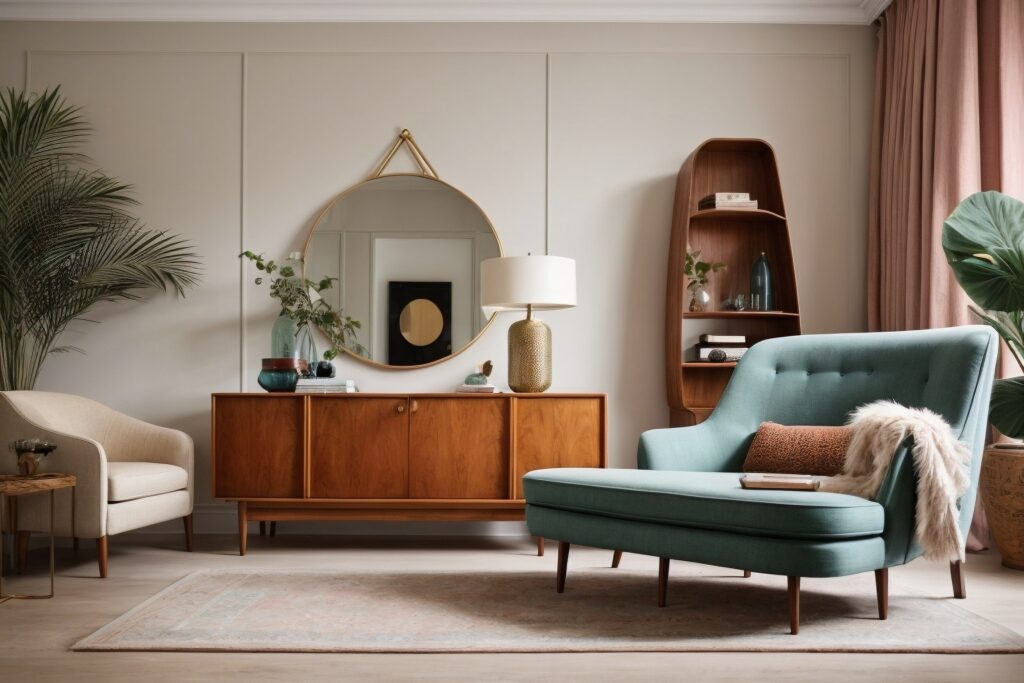
Incorporating vintage furniture into modern interiors requires a delicate balance, ensuring that the old seamlessly complements the new without overwhelming the space. The key lies in selecting pieces that resonate with the overall aesthetic and style of the modern décor. A mid-century modern sideboard, for instance, can seamlessly elevate a minimalist living room, while a vintage armchair with geometric patterns can add a touch of eclectic charm to a contemporary bedroom.
Achieving a cohesive look entails careful consideration of scale and proportion. A statement-making vintage armoire can anchor a spacious living room, while a petite vintage side table can gracefully adorn a modern entryway. Ensuring that the vintage pieces harmonize with the surrounding décor in terms of color, texture, and finish is crucial to creating a visually appealing and balanced space.
When blending vintage and modern elements, it’s essential to avoid an overly curated or museum-like atmosphere. Instead, embrace the eclectic spirit of mixing styles, allowing the vintage pieces to bring their unique personalities to the forefront. A vintage dresser paired with a sleek modern bed, for instance, creates a dynamic contrast that showcases the individuality of the homeowner.
3: Repurposing and Reinventing Furniture
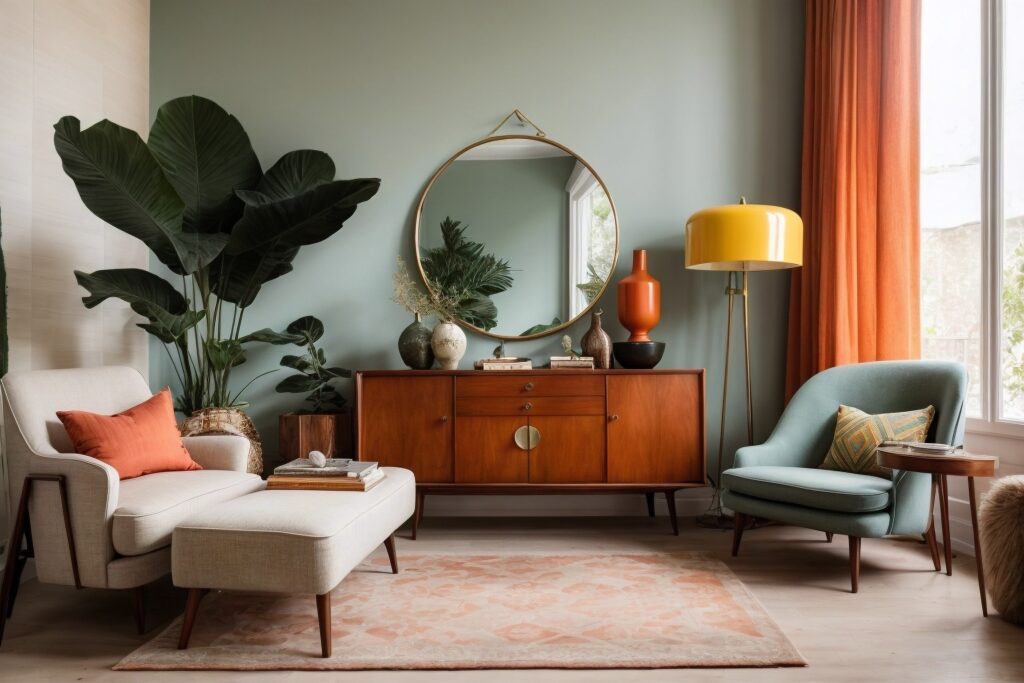
In a world increasingly focused on sustainability and environmental consciousness, repurposing and reinventing furniture has emerged as a creative and eco-friendly approach to interior design. By transforming discarded or outdated pieces into functional and stylish furnishings, we not only breathe new life into these treasures but also minimize the environmental impact associated with mass-produced furniture.
The possibilities for repurposing furniture are as diverse as the imagination itself. An old wooden trunk can be transformed into a rustic coffee table, while discarded wooden pallets can be cleverly reassembled into a unique bookshelf. Antique doors can be repurposed as headboards, adding a touch of character to a modern bedroom. The limitations are only set by one’s ingenuity and creativity.
Rejuvenating vintage furniture often requires a combination of restoration and creative reinvention. Cleaning, polishing, and repairing damaged pieces are essential steps in restoring their former glory. For a more adventurous approach, consider customizing vintage furniture with paint, reupholstery, or hardware to match your personal style or complement the existing décor. A fresh coat of paint can transform a drab dresser into a vibrant statement piece, while new upholstery can infuse a vintage armchair with modern elegance.
The process of repurposing and reinventing furniture offers a deeply rewarding experience. By breathing new life into discarded pieces, we not only create unique and personalized furnishings but also contribute to a more sustainable approach to interior design. Each transformed piece stands as a testament to our creativity and commitment to environmental consciousness.
4: Vintage Finds: Tips for Treasure Hunting
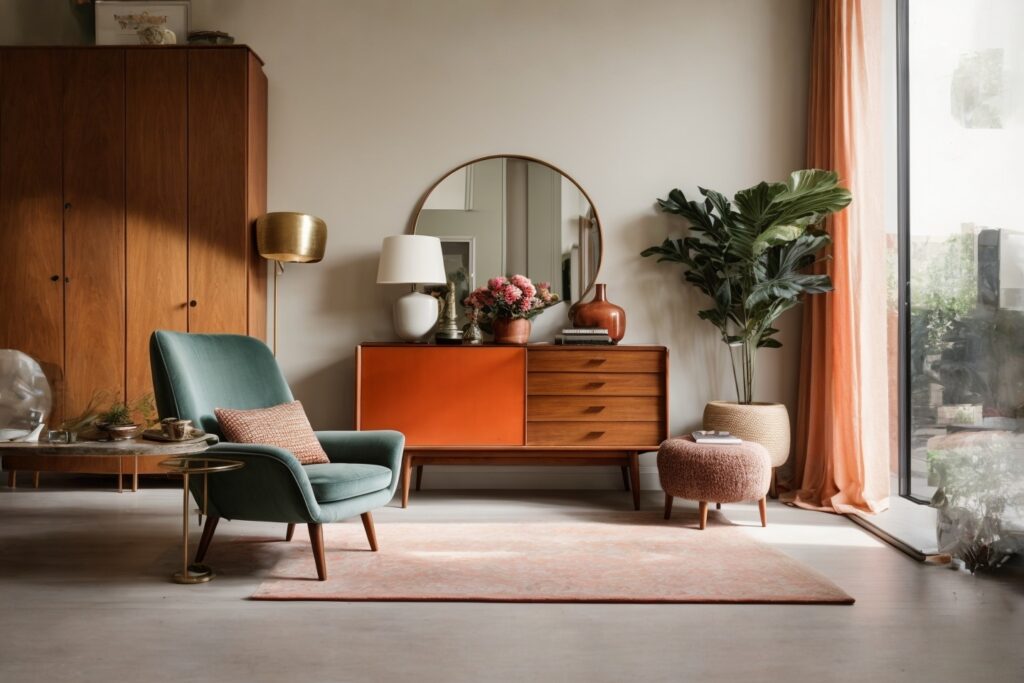
The thrill of discovering a hidden gem at a flea market, antique shop, or thrift store is an exhilarating experience that lies at the heart of vintage furniture hunting. These treasure troves offer a veritable bounty of unique and characterful pieces waiting to be unearthed. Embarking on a vintage furniture-hunting adventure requires patience, perseverance, and a keen eye for detail.
Flea markets, often held in open-air settings, are a haven for bargain hunters and vintage enthusiasts alike. These bustling hubs of activity bring together a diverse array of vendors, each offering its eclectic mix of items. Here, you’ll encounter everything from discarded household goods to hidden gems with rich histories. While flea markets may require more digging and sifting through items, the potential rewards are well worth the effort.
Antique shops, on the other hand, offer a curated selection of vintage furniture and décor, often specializing in specific eras or styles. These establishments provide a more refined shopping experience, with knowledgeable staff ready to assist in finding the perfect piece for your home. While prices tend to be higher in antique shops, the assurance of authenticity and quality often justifies the investment.
Thrift stores, operated by charitable organizations, offer a treasure trove of donated items, including a wide range of vintage furniture. With prices typically very affordable, thrift stores are a great place to start your vintage furniture-hunting journey. Regular visits are key, as inventory constantly changes, increasing the chances of stumbling upon a hidden gem.
The world of online marketplaces and auctions has also opened up new avenues for vintage furniture hunting. Online platforms like eBay, Etsy, and Ruby Lane offer a vast selection of vintage pieces from around the globe, allowing you to browse and bid from the comfort of your home. However, online shopping requires careful evaluation of photos, seller reviews, and return policies to ensure authenticity and condition.
When embarking on your vintage furniture-hunting adventures, keep an open mind and let your senses guide you. Don’t be afraid to negotiate prices, as bargaining is often an expected part of the process. Embrace the imperfections and patina of vintage pieces, as they are what gives them their unique character and charm. Above all, enjoy the thrill of the hunt and cherish the treasures you discover along the way.
5: Breathing New Life into Vintage Treasures
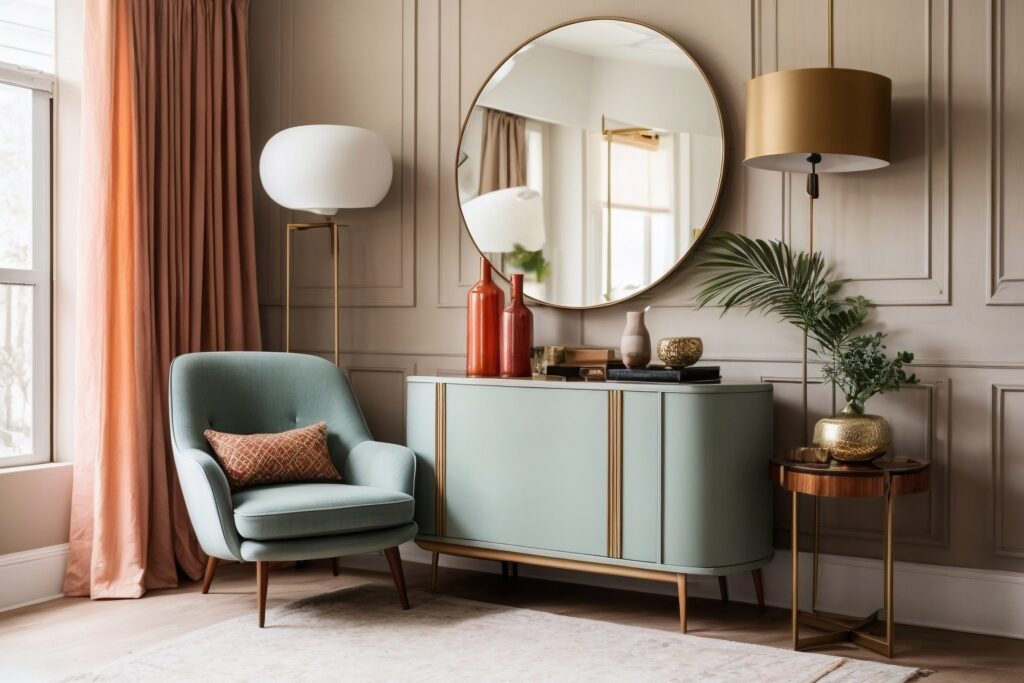
Transforming vintage furniture into functional and stylish pieces for your home requires a combination of creativity, craftsmanship, and attention to detail. The process of restoration and reinvention, while sometimes challenging, is deeply rewarding, allowing you to create one-of-a-kind furnishings that reflect your style and add a touch of history to your living spaces.
Before embarking on any restoration or reinvention project, it’s crucial to assess the condition of the vintage piece. Carefully inspect the furniture for any structural damage, loose joints, or signs of wood rot. If the piece is heavily damaged, it may be necessary to consult with a professional furniture restorer to ensure its integrity and structural soundness.
For minor repairs, such as fixing loose joints or repairing scratches, DIY enthusiasts can tackle these tasks themselves. Various furniture repair kits and guides are available to assist beginners in these undertakings. Remember to approach any repairs with patience and caution, following safety guidelines and using appropriate tools and techniques.
Cleaning and polishing vintage furniture often reveal its hidden beauty and bring back its luster. Start by thoroughly wiping down the piece with a damp cloth to remove dust and dirt. For deeper cleaning, use a mild soap solution specifically designed for wood or upholstery. Once dry, apply a wax or polish to protect the surface and enhance its shine.
Reupholstering vintage furniture can dramatically transform its appearance and adapt it to your décor. If the original upholstery is beyond repair or if you desire a different style, consider reupholstering the piece. This process involves removing the old fabric, carefully measuring and cutting new fabric, and securing it to the furniture frame using professional reupholstery techniques.
Adding hardware or other decorative elements can further personalize your vintage furniture. Replacing outdated knobs or handles with new hardware can instantly modernize a piece. Decorative trims, such as brass tacks or nailhead trim, can add a touch of elegance and refinement. Experiment with different styles and finishes to complement your taste and the overall aesthetic of your home.
The process of breathing new life into vintage treasures is a journey of creativity, craftsmanship, and appreciation for the beauty of the past. By transforming discarded pieces into functional and stylish furnishings, we not only enhance our living spaces but also contribute to a more sustainable approach to interior design. Each restored or reinvented piece becomes a testament to our individuality, resourcefulness, and love for all things vintage. Embrace the process, let your imagination run wild, and cherish the unique treasures you create along the way.
Conclusion
Vintage and repurposed furniture has emerged as a transformative force in the realm of interior design, adding a touch of history, character, and sustainability to modern spaces. The allure of these pieces lies in their ability to transcend the boundaries of time, seamlessly blending the old with the new to create homes that exude warmth, individuality, and a deep connection to the past.
The art of incorporating vintage furniture into modern interiors requires a delicate balance, ensuring that each piece harmonizes with the overall aesthetic and style of the home. By carefully selecting pieces that resonate with the existing décor and considering scale, proportion, and color harmony, individuals can create spaces that are both visually appealing and deeply personal.
Repurposing and reinventing furniture offer a creative and eco-friendly approach to interior design. By transforming discarded or outdated pieces into functional and stylish furnishings, we not only breathe new life into these treasures but also minimize the environmental impact associated with mass-produced furniture. The process of restoration and reinvention requires patience, craftsmanship, and a keen eye for detail, but the rewards are well worth the effort.
Embarking on a vintage furniture-hunting adventure is an exhilarating experience that lies at the heart of this transformative trend. Flea markets, antique shops, thrift stores, and online marketplaces offer a treasure trove of unique and characterful pieces waiting to be unearthed. With an open mind, a discerning eye, and a passion for the past, individuals can discover hidden gems that will add a touch of vintage charm to their homes.
Breathing new life into vintage treasures is a journey of creativity, craftsmanship, and appreciation for the beauty of the past. By transforming discarded pieces into functional and stylish furnishings, we not only enhance our living spaces but also contribute to a more sustainable approach to interior design. Each restored or reinvented piece becomes a testament to our individuality, resourcefulness, and love for all things vintage. Embrace the process, let your imagination run wild, and cherish the unique treasures you create along the way.







